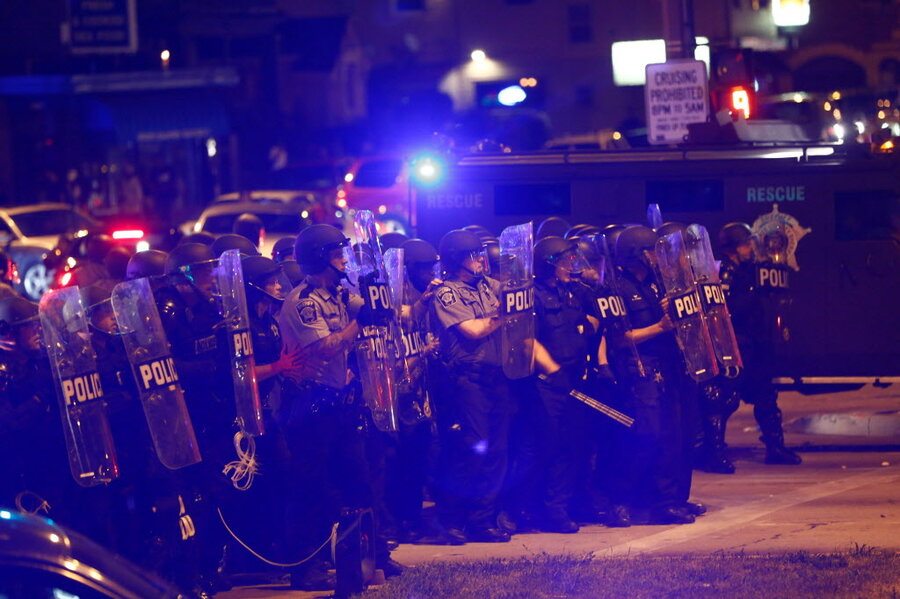After Milwaukee protests, will police release video of weekend shooting?
Loading...
For the second night in a row Sunday, tensions flared in the Milwaukee neighborhood where a police officer fatally shot an armed black man fleeing a traffic stop on Saturday afternoon. One person was shot and a police officer was injured when the protests turned violent, but there was no repeat of the destruction of businesses that took place during riots on Saturday night.
About 150 people took to the streets Sunday night, followed by clashes with the police. Shots were fired in three locations, protestors threw bottles and rocks at a line of officers in riot gear, and several people were arrested.
A body cam captured the 25-second event when the African-American suspect, Sylville Smith, was shot and killed by a police officer Saturday afternoon. The video has not been made public yet because of the ongoing investigation, but Milwaukee Mayor Tom Barrett called for its quick release. The chief of police has asked for more time before releasing the video.
"I don't think there's anyone in the country who's released a body-worn camera of an officer-involved shooting in 24 hours or 36 hours. I think Chicago set the modern record with a week," Chief Ed Flynn said during a press conference Sunday, according to Fox.
The coming weeks' decision over when and if to release the video to the public adds to a growing national discussion on how transparent police departments should be with the communities they govern. Earlier this year, the Chicago Police Department made available online a trove of video footage and audio clips of open cases that show the use of force and firearms by its officers.
Some see this transparency as a sign of progress, The Christian Science Monitor reported.
With the release of the files, "the police have the opportunity to end decades of secrecy and denial," Craig Futterman, a professor at the University of Chicago Law School, told the Monitor.
In Milwaukee, the police department has been working to provide the public with information surrounding the timeline of events. Chief Flynn confirmed that the police officer was also African-American, and pulled over Mr. Smith because his car was "behaving suspiciously." Smith then ran "a few dozen feet" before turning back toward the officer while holding a gun.
"I want the community to know that the individual had a gun," Mayor Barrett said at the news conference.
"It was in his hand. He was raising up with it," Flynn said. Smith did not cooperate with the officer's calls for him to drop the gun, police said.
Community leaders say that longstanding failure to deal with issues faced by Milwaukee's black residents, including joblessness and poverty, fed the protests. Nearly 40 percent of Milwaukee's 600,000 residents are black, and they are heavily concentrated on the North side, where the shooting took place.
Wisconsin Gov. Scott Walker activated the National Guard, but the police chief hasn't deemed it necessary to bring in more forces. Protestors torched six businesses and 17 people were arrested on Saturday night, but calm was restored during the day Sunday as volunteers gathered to clean up the streets.
Earlier Sunday evening, family and friends of Smith held a candlelight vigil at the site of the shooting.
A man who identified himself as Smith's brother told CBS Sunday,"We are losing loved ones everyday to the people that are sworn in to protect us." He said the violent riot was provoked by the police's failure to protect the community as they had pledged to do. "We're not the one who is killing us. You're killing us. We can't make a change if you all don't change."
This isn't the first time Milwaukee has broken out in protests following a police shooting. Protestors took to Milwaukee's streets in 2014 following the shooting death of Dontre Hamilton, a mentally ill black man sleeping in a park, who was fatally shot 14 times after he physically refused being frisked. The white police officer, Christopher Manney, was not charged because the court accepted that he shot Mr. Hamilton in self-defense.
This report contains material from The Associated Press.








